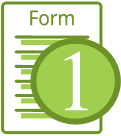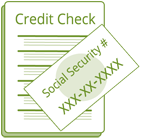February 1, 2011 (Shirley Allen)

By a margin of almost three to one, homeowners who refinanced their first lien home mortgage lowered their principal balance by paying an additional amount at the time of closing versus those borrowers who took cash out. Forty-six percent of homeowners who refinanced their mortgage in the fourth quarter of 2010 paid down their loan balance, the highest level ever since records on refinancing patterns began in 1985.
According to the statement released by mortgage giant Freddie Mac, 16 percent of all refinance loans were “cash out” loans where the borrower increased their mortgage loan balance by at least 5 percent. This is the lowest cash-out share since the analysis began in 1985.
By comparison, in the third quarter of 2010, 35 percent of homeowners who refinanced their mortgages paid their loan balances down, while the share of cash out refinanced mortgages was 18 percent. The average cash-out share over the past 25 years has been 62 percent.
Frank Nothaft, Freddie Mac vice president and chief economist, said, “Early in the fourth quarter mortgage rates on 30-year fixed-rate conforming loans were at very low levels, the likes of which haven’t been seen in more than 50 years. This encouraged borrowers who could do so to refinance, and many looked at their other investment options and chose to pay down a bit of their mortgage at the same time.”
The low cash-out refinancing activity coupled with higher cash-in share brought the net dollars of home equity converted to cash to the lowest level in more than a decade. In the fourth quarter, an estimated $6.8 billion in net home equity was cashed out during the refinance of conventional prime-credit home mortgages, down from $8.2 billion in the third quarter.
After adjusting for inflation, the cash-out volume was the lowest since the first quarter of 1997. Over 2010, about $32 billion was cashed out of home equity on net, compared with $318 billion during the peak year of 2006. The 2010 volume was the smallest inflation-adjusted annual amount since 1997.
The report also noted the difficulties in refinancing due to tighter underwriting standards and declines in home values. According to Freddie Mac’s analysis, the median appreciation of the collateral property was a negative 3 percent over the median prior loan life of 4.1 years.
Borrowers who refinanced their loans reduced their interest rate about 1.25 percentage points which saved them over $1,850 in principal and interest payments on a $200,000 loan.
“Consumers are generally shedding debt, and mortgages are just another way they’re doing it. Between 2007 and the third quarter of 2010, mortgage debt declined more than $400 billion, according to the Fed. The estimated volume of net equity cashed out in our report do not account for the homeowners who have paid off their mortgages in their entirety,” Nothaft added.
Tags: refinance, mortgage, borrowers, cash-in, cash-out, homeowners, first-lien mortgages, 30 year fixed, conforming loans, underwriting standards, declining home values




